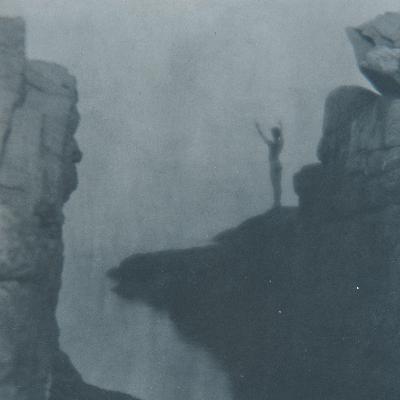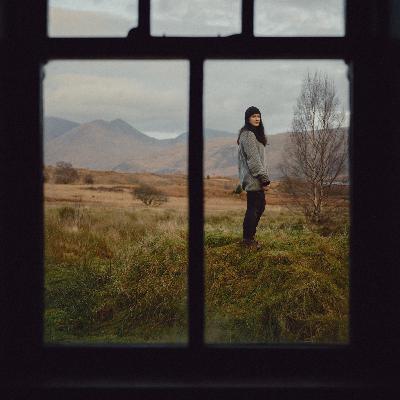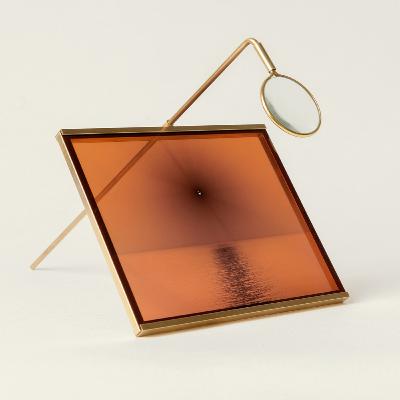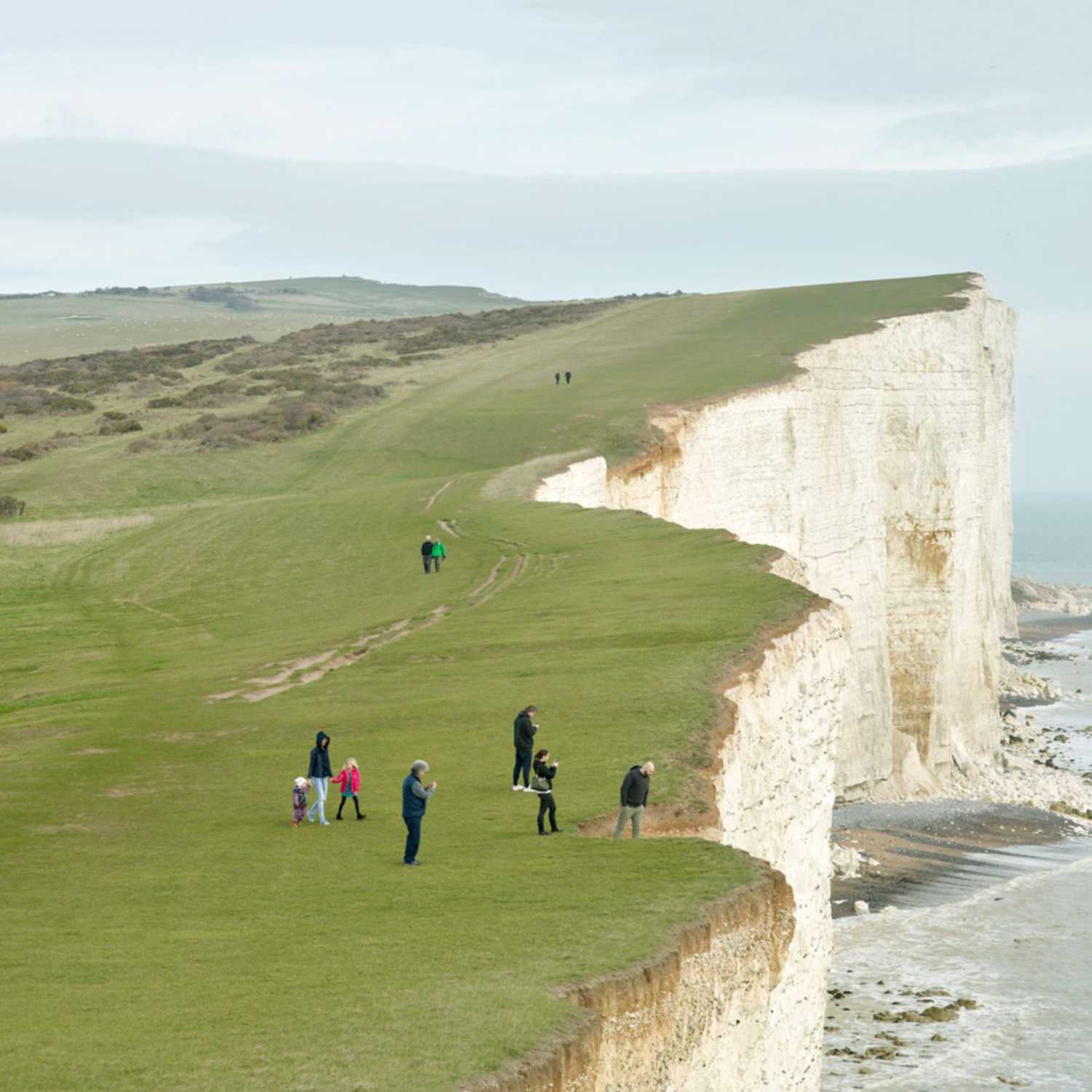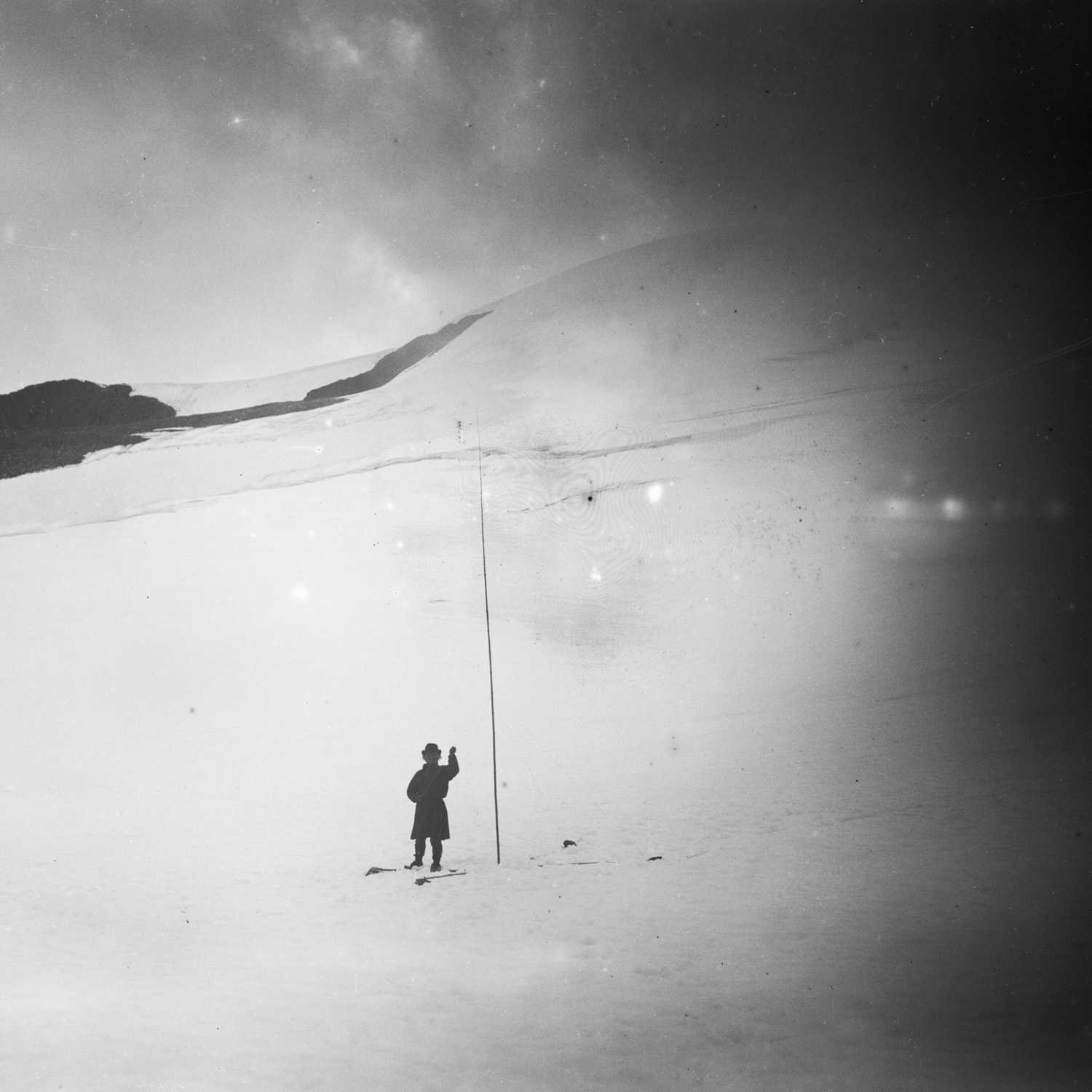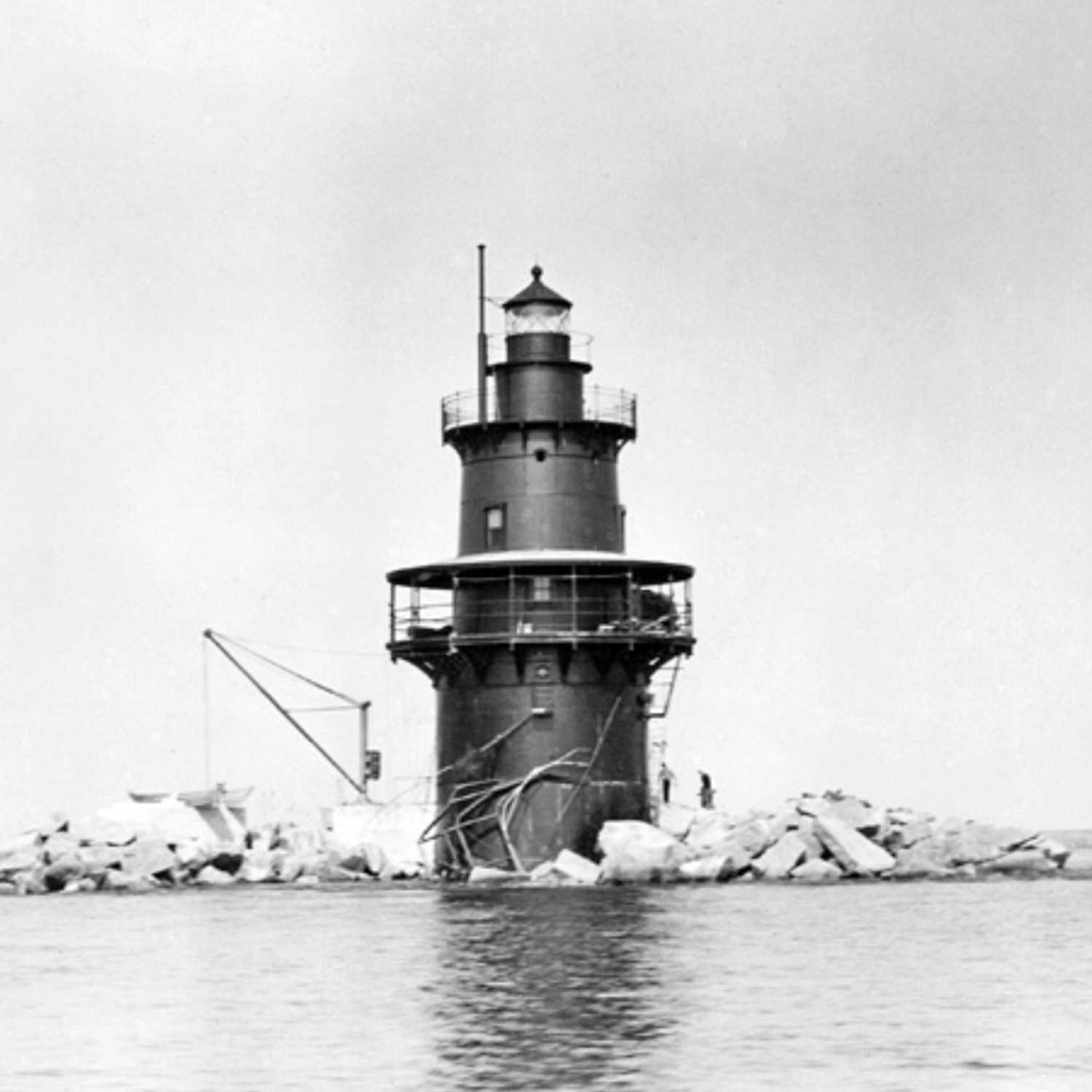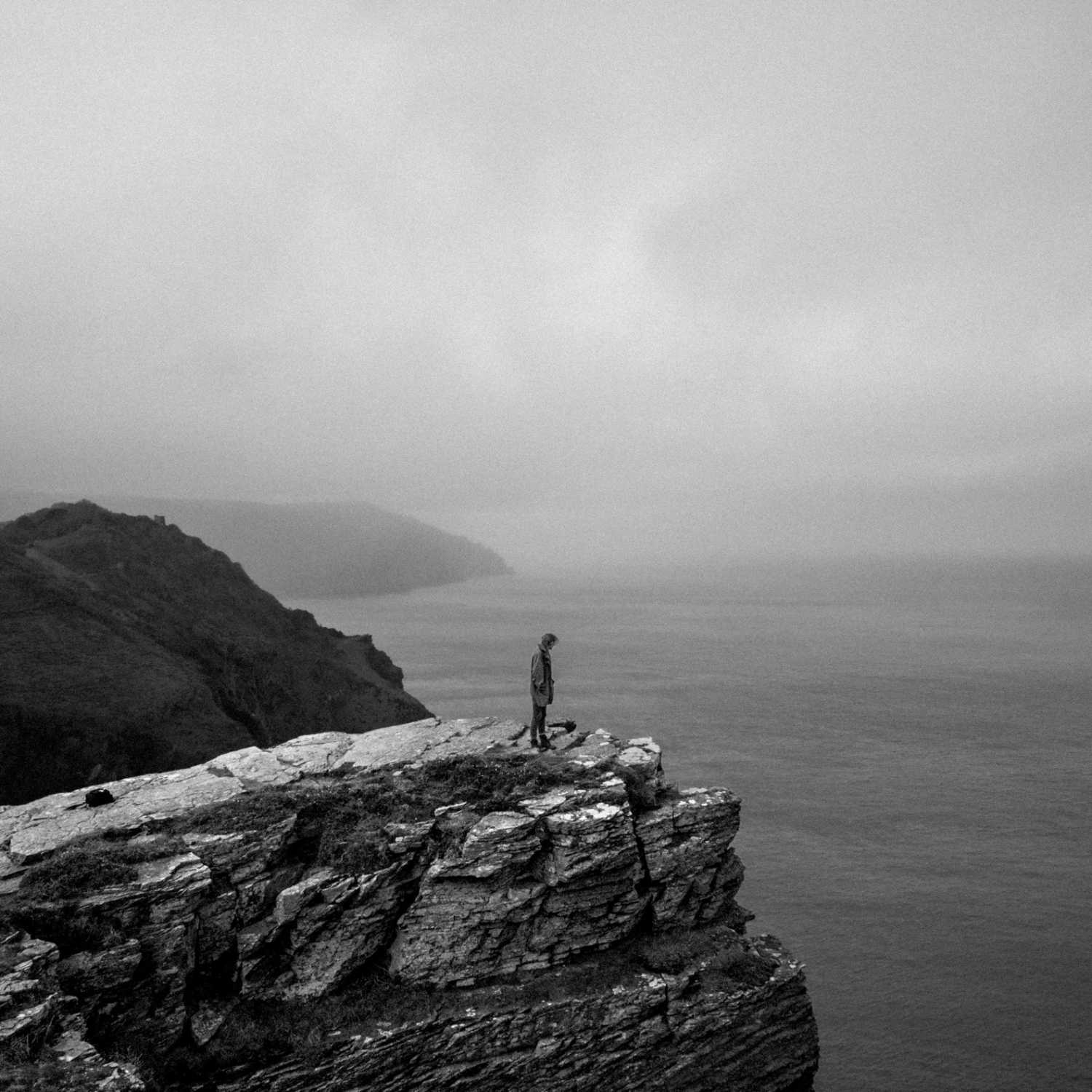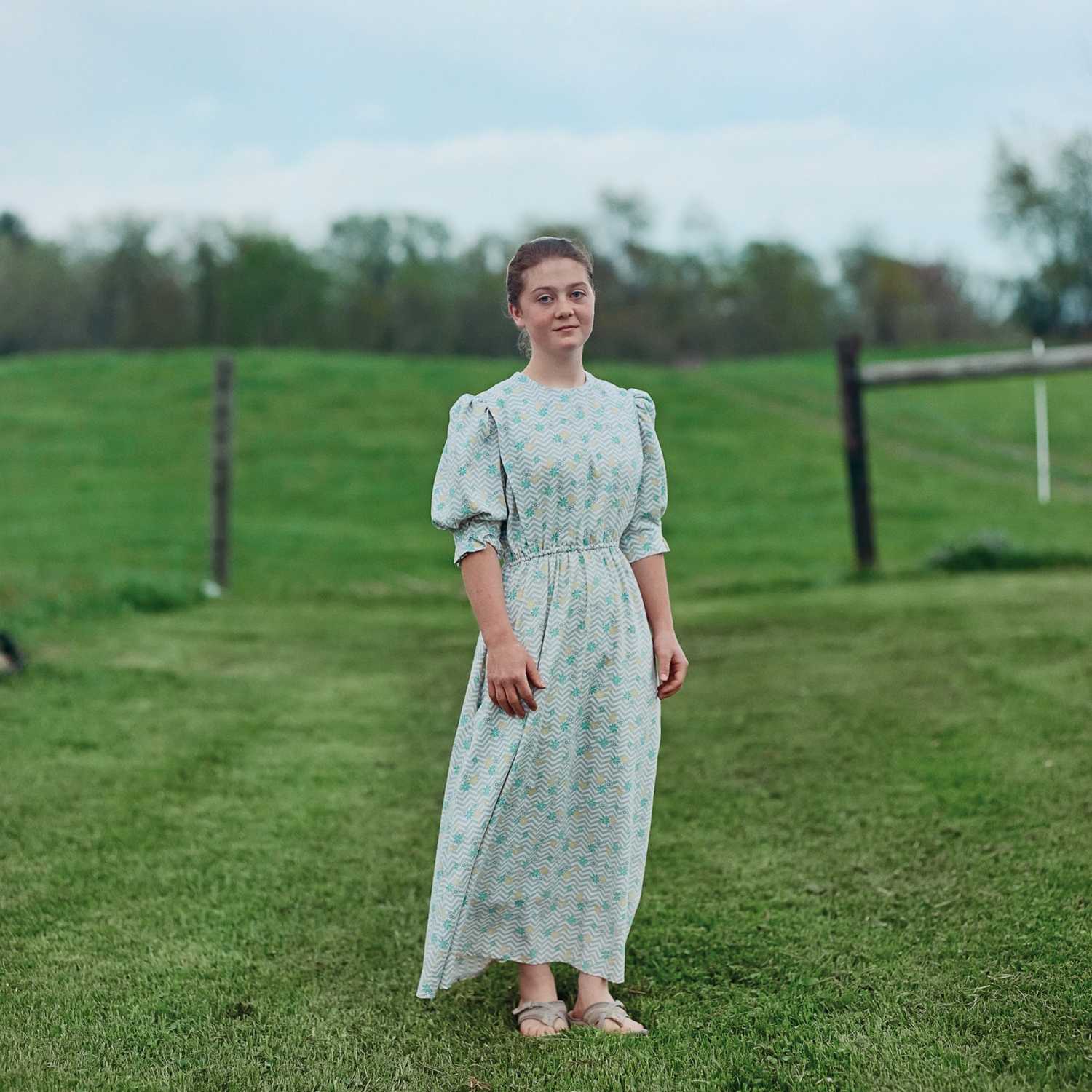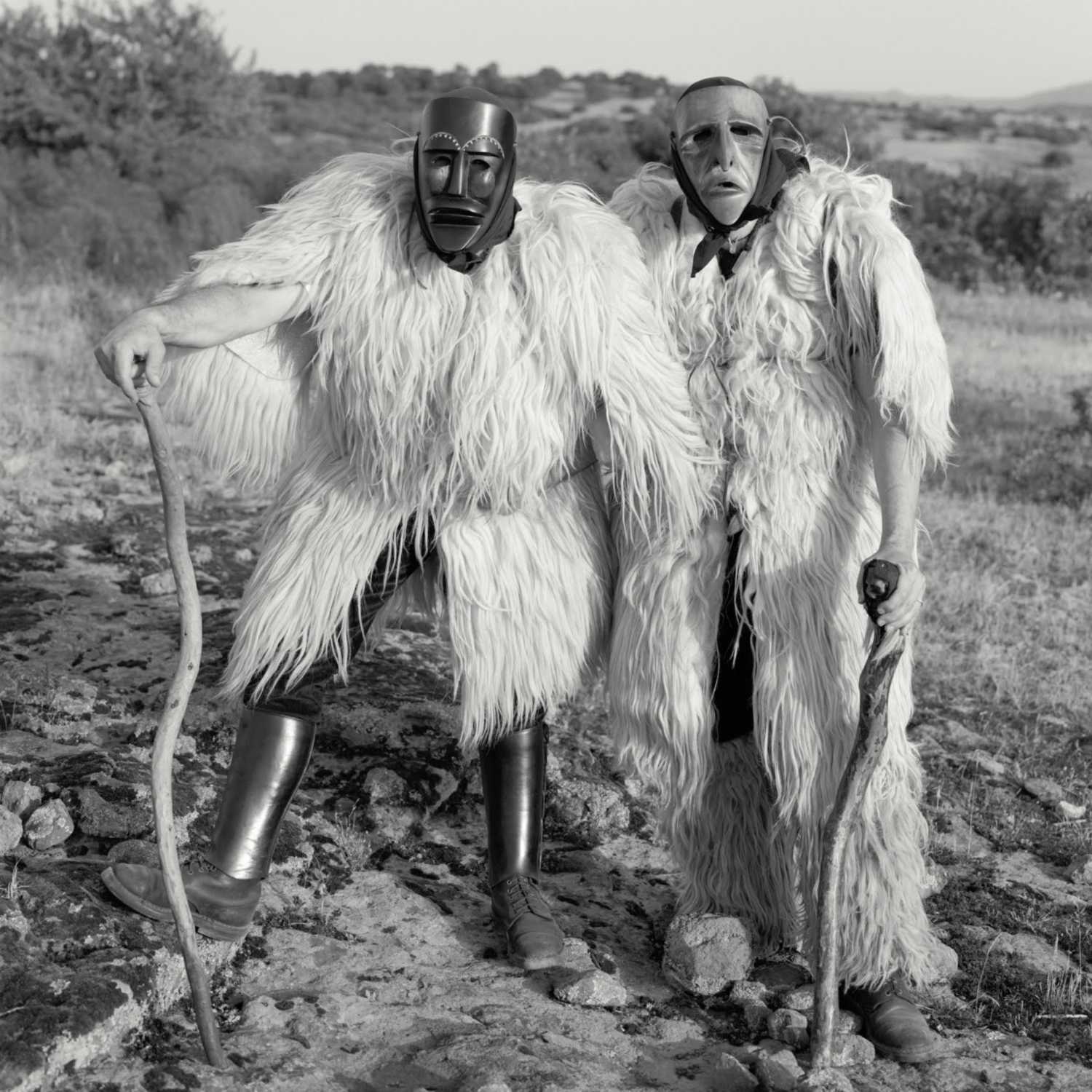Discover The Land Behind
The Land Behind

The Land Behind
Author: Peter Holliday
Subscribed: 11Played: 192Subscribe
Share
© Peter Holliday
Description
Join photographer Peter Holliday in conversation with a range of makers and thinkers as he explores questions on art, philosophy and the environment.
Support the podcast: https://www.patreon.com/thelandbehind
21 Episodes
Reverse
Peter speaks with the Australian philosopher Jeff Malpas, emeritus distinguished professor at the University of Tasmania, whose work explores the fundamental role the appearance of place plays in understanding who and what we are. Malpas is the author of numerous books and essays including Place and Experience (Cambridge University Press, 1999) and In the Brightness of Place: Topological Thinking with and After Heidegger (SUNY Press, 2022). In a world increasingly forgetful of the place where we are, Malpas invites us to attend to the “inevitable and unavoidable embeddedness in the environing world where we find ourselves and which determines what we are.”Patreon: https://www.patreon.com/thelandbehindInstagram: https://www.instagram.com/thelandbehindpodcastTimestamps:(00:00) Introduction(00:53) Where is Jeff Malpas?(05:32) Who is Jeff Malpas?(12:26) How are Malpas’s ideas different from those of his contemporary Edward S. Casey?(20:48) Why is Marcel Proust so important to a philosopher of place?(24:55) Continental Philosophy vs Analytic Philosophy(28:02) Hermeneutics vs Phenomenology(35:43) How is place inseparable from who we are?(45:38) Where is here? Where is the place where we are?(49:47) The problem with associating the concept of place with the notion of the transcendental (58:31) The body is not the foundation of place(1:05:41) How does our placedness precede social and political constructions of place?(1:07:00) The problematics of place and the controversy of Heidegger’s Nazism(1:15:46) The forgetting of place(1:22:17) How does the problem of God fit into the question of place?(1:35:03) The remembrance of place(1:42:15) The temporality of place(1:45:40) The ethics of belonging
Peter speaks to the philosopher Edward S. Casey about the philosophy of place and the ecology of emotion, drawing insights from Casey’s book Turning Emotion Inside Out: Affective Life Beyond the Subject (Northwestern University Press, 2021). Central to their discussion is the concept of eco-affectivity, the idea that emotions are deeply rooted in and shaped by our environment. Why then does place matter today? Where do emotions come from? How are our hearts and minds already embedded in the landscape that surrounds us? To what extent is an emotion an environmentally oriented phenomenon? These questions guide a broader reflection on how art can reveal the emotional atmosphere of place in ways that language alone cannot.Patreon: https://www.patreon.com/thelandbehindInstagram: https://www.instagram.com/thelandbehindpodcastTimestamps:(00:00) Introduction(00:35) Who is Ed Casey?(07:32) How Casey’s upbringing influenced his ideas on place(11:22) Why place matters(18:24) How our sense of place is heightened by illness(22:50) To what extent is a landscape an extension of the body?(27:30) Where do emotions come from? (40:05) Remembering Mikel Dufrenne(45:00) The extraversion of emotion(53:41) The problem with subjective accounts of emotion(58:22) How is the emotional atmosphere of place shaped by the artist’s state of mind?(1:08:05) Is the pictorial view of the world the same space that our bodies live, feel and experience? (1:18:19) The historical dimension of emotion
Peter interviews the philosopher Erin Plunkett about the 20th-century Czech thinker Jan Patočka, exploring how his thought can help guide us through the problems of truth and beauty in the 21st century. Erin is currently Senior Lecturer in Philosophy and Religious Studies at the University of Hertfordshire. She is a co-editor of The Selected Writings of Jan Patočka: Care for the Soul, published in 2022 by Bloomsbury.
Patreon: https://www.patreon.com/thelandbehind
Instagram: https://www.instagram.com/thelandbehindpodcast
Timestamps:
(00:00) Introduction
(00:42) Who is Erin Plunkett?
(04:04) Who was Jan Patočka?
(08:40) Patočka as a philosophical hero
(12:03) The best way to think about Patočka’s thought
(17:20) Meaning as disclosure
(18:03) Patočka’s phenomenology
(21:30) Aletheia
(31:25) The Solidarity of the Shaken
(35:14) The relationship between philosophy and art
(48:48) The essence of art before it has been institutionalised
(52:21) Truth, Beauty and Goodness
(1:00:46) Beauty and the Limits of Truth
(1:07:40) How to Identify the Truth in 2024
Peter speaks to the author and researcher Kat Hill about bothies and what they can teach us about histories of dwelling and place. Kat is the author of Bothy: In Search of Simple Shelter, published in 2024 by William Collins.Patreon: https://www.patreon.com/thelandbehindInstagram: https://www.instagram.com/thelandbehindpodcastTimestamps:(00:00) Introduction(00:58) Who is Kat Hill?(04:03) What is a bothy?(05:08) How did your interest in bothies begin?(09:18) What happens to old bothy guestbooks?(11:16) When did you decide to write a book about bothies?(14:08) What was the development of the book like? (16:21) Why did you choose the title?(18:42) How did bothies open a space for you to better understand yourself?(23:58) What is it that defines a bothy?(26:22) When we emphasise a bothy as a place of retreat what kind of meaning is being lost?(28:59) What can the military history of Cape Wrath tell us about the meaning of wilderness?(34:00) How can bothies help guide us through the environmental questions of our age?(38:49) What can bothies tell us about what it means to dwell?(44:06) How can bothies help inform new architectural models?(53:20) Sandy, the Cape Wrath Hermit of Strathchailleach Bothy(57:18) How can bothies open up the skies for us?
Peter speaks to the philosopher Ted Toadvine about a wide range of environmental themes and issues. Toadvine specialises in environmental ethics and contemporary European philosophy. His new book titled The Memory of the World: Deep Time, Animality, and Eschatology explores the ethical and ecological implications of deep time from a phenomenological perspective and is available now via University of Minnesota Press.
Patreon: https://www.patreon.com/thelandbehind
Instagram: https://www.instagram.com/thelandbehindpodcast
Timestamps:
(00:00) Introduction
(02:44) Episode begins
(09:57) Why Toadvine wrote The Memory of the World
(16:56) Toadvine’s earliest experiences of deep time
(23:27) Reconciling humanity and the natural environment
(40:57) Technology and nature
(46:00) The problem with the Anthropocene
(58:10) The problem with biodiversity
(01:05:52) The relationship between nature and language
(01:10:12) What is eco-phenomenology?
(01:15:10) Nature as the horizon of all things
(01:20:07) “Nature loves to hide”
(01:26:08) Edmund Husserl’s description of the natural world as a “correlate of consciousness”
(01:31:48) “The sun did not exist before human beings”
(01:42:45) The ethical problems of global sustainability
(01:52:23) The relationship between deep time and embodiment
(02:03:43) The animals that haunt our humanity from within
(02:20:38) Derrida at the end of the world
(02:29:06) The cultural obsession with doomsday
(02:36:39) The phenomenological perspective of the end of the world
(02:47:20) A phenomenology of the elements
(02:52:04) Art and the elements
Peter speaks to the philosopher Al Lingis about what we can learn by looking and the ethics of seeing. Described as one of the most original voices alive today in American philosophy, Al is a keen photographer, and many of his essays are accompanied by his own images. During the episode Al describes the significance of photography to the development of his own philosophical thinking.
Listen to the full episode by supporting the podcast on Patreon: https://www.patreon.com/thelandbehind
(32.00)
Peter joins the Helsinki-based photographer and researcher Harri Pälviranta at his studio to discuss the various themes behind his artistic practice, much of which has been dedicated to making visible structures of violence and issues of masculinity. His recent photobook titled Wall Tourist, published by Kult Books in 2022, contains a series of self-critical portraits exposed against the international boundaries of state power that question the role of the travelling photographer in the creation of the documentary image.
https://harripalviranta.com/
https://www.instagram.com/harri_palviranta/
Join the conversation on Patreon: https://www.patreon.com/thelandbehind
Peter speaks to the American photographer and writer Tim Carpenter about the "existential conundrum" of being a photographer, as explored in Tim's new book-length essay titled ‘To Photograph is to Learn How to Die’, published in 2023 by The Ice Plant. Their conversation is a discussion about the photographic life and how acknowledging our own mortality as human beings helps us draw deeper meanings from a life lived in the midst of the visible.
https://www.timcarpenterphotography.com/
https://www.instagram.com/timcarpenter
Peter speaks to the Japanese philosopher Takeshi Morisato about the 20th-century Kyoto School intellectual named Tanabe Hajime, whose philosophical method assimilated traditional elements of Japanese Buddhism with the perspectives of Western existentialism and Judeo-Christian theology during a period of enormous social upheaval in the history of modern Japan. Takeshi Morisato is a lecturer in Non-Western Philosophy at the University of Edinburgh. He is also the current editor of the European Journal of Japanese Philosophy and the assistant editor of the Journal of East Asian Philosophy. In 2021 he published a short introduction to the thought of Tanabe Hajime titled Tanabe Hajime and the Kyoto School: Self, World and Knowledge via Bloomsbury.
Peter joins Juuso Noronkoski at his studio in Helsinki to discuss the Finnish artist's photographic-based sculptural practice. Recognised for his ability to challenge and transform our expectations of the photographic image, Juuso's work has been exhibited worldwide in countries such as Japan and Germany. Drawing its inspiration from the phenomenon of different natural cycles, Juuso’s work is a spatiotemporal performative response to ideas of geological and cosmological time. Whilst noted for his small-scale and mixed media gallery-specific installations, what is perhaps remarkable about Juuso's work is the way it invites the spectator to think beyond the walls of the white cube to reflect on art’s relationship to the natural world at large.
http://www.juusonoronkoski.com/
Join the conversation on Patreon: https://www.patreon.com/thelandbehind
Peter speaks to the Brighton-based British photographer Simon Roberts about his experience photographing England’s social landscape in the decade preceding Brexit. Whilst Simon’s unique large format perspectives draw their significance from a long and rich tradition of British landscape representation, they demonstrate a challenge to traditional stereotypes and idealised cliches of Britain’s visual geography. Simon’s photographic depictions of Britain's high streets, beach resorts, national parks and leisure piers reveals an England which Turner or Constable would not recognise. Rather, Simon's work exists as a critical social commentary on the conflicting perspectives of Britishness from the midst of Britain’s post-industrial, post-imperial landscape of the early 21st century.https://www.simoncroberts.com/Join the conversation on Patreon: https://www.patreon.com/thelandbehind
Peter speaks to the Danish photographer Joakim Eskildsen about his three-decade long career and the deep connections he has forged along the way. They touch on many topics, including Joakim’s current show at the Fotografisk Center in Copenhagen as well as his experience making a book with Steidl. They also discuss the meaning of home and consider what the 19th century Danish philosopher Søren Kierkegaard can teach us about the nature of beauty. Joakim also discusses his formative years as a student in Finland and shares the experience of his encounter with Finnish photographers including Ritva Kovalainen, Pekka Turunen, Pentti Sammalahti and Jorma Puranen, as he considers the impact these mentors have had on his approach to image-making.https://www.joakimeskildsen.comJoin the conversation on Patreon: https://www.patreon.com/thelandbehind
Peter speaks with the Dartmoor-based British photographer Nicholas J. R. White about the interests and concerns that motivate his long-form, research-based and environmentally-situated large format practice. A graduate of Plymouth College of Art, Nicholas draws many of his motifs from the surrounding British landscape, and much of his photographic work can be characterised by underlying questions of land ownership and environmental rights. https://www.nicholasjrwhite.co.uk/Join the conversation on Patreon: https://www.patreon.com/thelandbehind
Peter speaks to the Swedish Gothenburg-based photographer Emanuel Cederqvist about his book The Margin of Error. Born in Stockholm in 1863, Axel Hamberg is remembered today as a geographer, a scientist and a cartographer. What is perhaps lesser known about this man is his talent as a photographer. At the beginning of the 20th century, Hamberg began journeying to the glaciated highlands of the Scandinavian Mountains to conduct a number of geological surveys in the region of Sarek. These studies were carried out over a period of several decades, and in 1922, Hamberg’s photographs from these expeditions were published by the Swedish Tourist Association in his book named The Mountains of Sarek. Almost a century later, Emanuel Cederqvist would happen upon the weather station built by Hamberg at Pårtetjåkkå during a hike through Sarek National Park with his father in 2013. Over a subsequent period of six years the Gothenburg-based photographer returned to this region of the Swedish Arctic to continue a dialogue with the history of Axel Hamberg. The photographs from these explorations were eventually printed alongside Hamberg’s archive images in Cederqvist’s own book The Margin of Error, self-published in 2019 via the artist book collective Blackbook Publications. The Margin of Error is an important and valuable work exploring the convergence between two distinct historical perspectives within the same space. Its pages invite many deep and complex questions, not only about the ways by which we come to perceive and understand landscapes, but about the essence of the documentary medium itself.https://emanuelcederqvist.se/Join the conversation on Patreon: https://www.patreon.com/thelandbehind
Peter speaks to the site-specific musicians and installation artists Leander Knust and A. P. Bergeron in conversation on the other side of the North Atlantic Ocean. For two weeks, Leander and A. P. have been collaborating together at an artist's residency aboard a 19th century lighthouse off the east coast of Long Island. During their conversation, many questions are asked; Where and how do artistic endeavours begin? How can technology mediate the artist's connection to the natural world? What are the ways by which artists represent the relationship between themselves and their environment?https://bangklang.bandcamp.com/album/an-arctic-requiemJoin the conversation on Patreon: https://www.patreon.com/thelandbehindPhoto: United States Coast Guard
Peter speaks to Robert Darch about his new self-published photobook 'The Island'. As a self-described “artist-photographer”, Robert was born and raised in the Midlands. In the early 2000’s, he studied his BA in Photography at Newport in South Wales before falling seriously ill for a number of years. After his recovery he found himself in Devon, where in 2013 he returned to study his MFA at the University of Plymouth under the guidance of Jem Southam. Drawing inspiration from his personal life experiences, Robert's work is a profound reflection on the complex nuances of the histories to which our cultural existence belongs. His latest photobook 'The Island' is a visual response to the psychological impact of political events, in this case the resulting social consequences of the Brexit referendum in 2016.https://www.robertdarch.com/Join the conversation on Patreon: https://www.patreon.com/thelandbehind
Peter speaks to Richard Beaven from his home in upstate New York about his experience being a British photographer living and working in the post-9/11 landscape of the United States. During their in-depth conversation, they remember the deep and complex geological, cultural, political and colonial histories of the Hudson River Valley where Richard now has his home, and what these multi-layered narratives of the Hudson watershed might reveal about the tensions and possibilities of the current state of American society itself. Having previously worked in the corporate world of advertising, Richard began to pursue a career in photography in 2011. Since then he has worked on assignments for clients such as The New York Times, The Wall Street Journal and The Guardian. In 2020, he published the monograph All of Us in collaboration with the publisher Daylight Books. Focusing on the post-industrial and agricultural landscapes of upstate New York, Richard’s artistic practice seeks to reveal the spirit of the Hudson Valley in the faces of the people who inhabit it. As he alludes to during his discussion with Peter, his portraits are grounded in an air of empathy, hope and discovery. With this attitude in mind, he stresses the importance of interpersonal dialogue in his practice, including the imperative of being open to different ways of looking at the world.https://www.richardbeaven.com/Join the conversation on Patreon: https://www.patreon.com/thelandbehind
Peter speaks to Siân Davey to discuss how Siân's faith in humanity continues to shape her perception as a psychotherapist-turned-photographer. With reference to her photographs, Siân considers the restorative power of gardening during times of crisis. Throughout their conversation, they touch on the relationship between trauma and hope, Sian’s life as a mother, and the ways in which Buddhism has influenced her artistic practice. Meanwhile, Peter considers what a visit to the dentist can teach a photographer about what it means to live a life subject to the phenomenon of time.
https://www.siandavey.com/
Join the conversation on Patreon: https://www.patreon.com/thelandbehind
Peter speaks with the London-based documentary photographer Alys Tomlinson. Motivated by anthropological considerations such as the relationship between faith, identity and place, in 2018 Alys was the winner of the Sony World Photography Awards. In 2020, she was awarded first place in the Taylor Wessing Photographic Portrait Prize. Having just published her new photo book Gli Isolani inspired by cultural events and traditions specific to the Mediterranean islands of Sicily and Sardinia, Alys speaks about her upcoming documentary film Vera, based on the hidden life of the Orthodox nun after which the production assumes its working title. Peter also asks Alys about the parallels between photography and anthropology. Together, they consider the ways in which the documentary image can represent the concerns and conditions that make us who we are as human beings, with the dignity and openness the photographer's subject matter deserves.https://www.alystomlinson.co.ukJoin the conversation on Patreon: https://www.patreon.com/thelandbehind
Peter speaks to the ecological anthropologist Tim Ingold. During their in-depth discussion, they consider the nature of human-animal relationships and ecologies of perception. Meanwhile, they break down the false dichotomy between culture and nature, and consider the natural environment as the meeting place between earth and sky. With a distinguished career spanning over five decades, Tim is the author of 14 books and numerous articles. While he is known for his extensive research on the nature of landscape perception and the phenomenon of human-animal relationships, he has also written on artistic practises and has suggested ways of rethinking architecture, including how we might come to inhabit landscapes again. After graduating from the University of Cambridge in 1970, he spent 16 months with Sámi reindeer communities in northeast Finland. Following a year teaching at the University of Helsinki, in 1974 Tim became a lecturer in Social Anthropology at the University of Manchester. In 1999 Tim moved to the University of Aberdeen to assume the newly established Chair of Social Anthropology. As well as being a fellow of both the British Academy and the Royal Society of Edinburgh, he holds an Honourary Doctorate in Social Science and Art from the University of Lapland in Rovaniemi, Finland. https://www.timingold.com/Join the conversation on Patreon: https://www.patreon.com/thelandbehind



